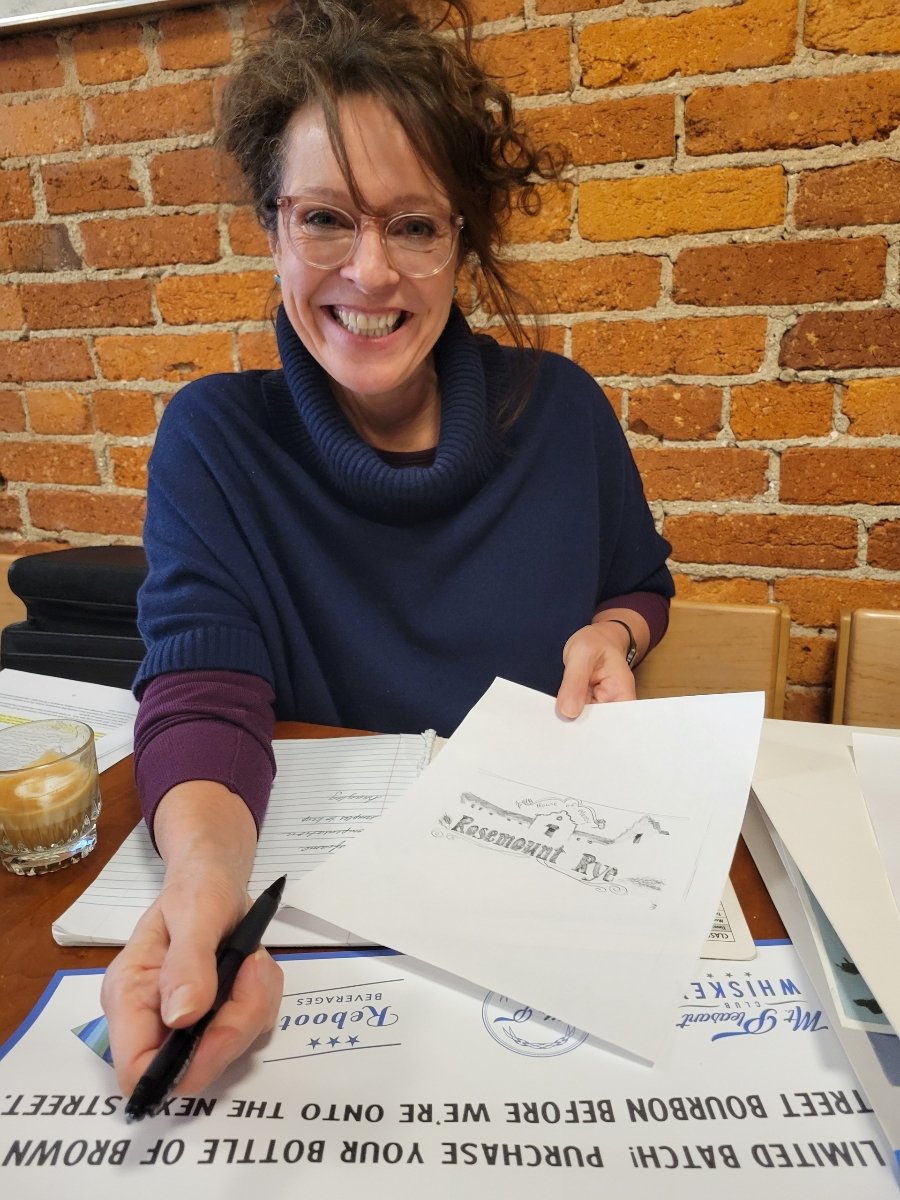Rum Barrel Finished Rye Whiskey
Mt. Pleasant’s western boundary, Rosemount Avenue, was created as part of the Rosemount Park subdivision in April 1887 (most of which is now part of Rock Creek). The beautiful monotype on this label is by Mt. Pleasant artist, Josie Vosoba. It features the site of Rosemount’s Spanish Colonial style “House of Mercy,” which opened in October 1911 as a “refuge and reformatory” for unwed expecting mothers, now a preschool for many local families.
Inside the bottle, you’ll find the result of our beloved Kilbourne Place Rye gestating in a Cotton & Reed rum barrel for four trimesters – she turned out great, down to earth with a subtle wild side! Aged for 6 years and coming in at 92 proof, there were only 264 bottles of Rosemount produced - get yours before they’re gone!
Label Art by Mt. Pleasant Artist Josie Vosoba
Josie Vosoba is a plein air oil painter who loves to capture moments in nature. She is best known for her colorful paintings created onsite in Rock Creek Park.
However, for this project she chose another medium and favorite technique called the monotype. She rolls ink onto a plate, wipes out the negative shapes with various objects, from a cotton ball to a toothpick, then runs it through the press to create one original print of the Rosemount building under the light of the moon. The “moonshine” concept is historically fitting for this Mt. Pleasant Rye Whiskey.
Josie lives in and regularly hikes and bikes in the neighborhood, finding much inspiration in her beloved Rock Creek Park. Her original paintings and prints can be found at www.josievosoba.com and on Instagram @josievosoba.
Rosemount Avenue History
The House of Mercy, now known as Rosemount Center, opened on October 24, 1911. The structure cost $60,000 and was designed as a dormitory and infirmary by Nathan Wyeth. The institution was maintained by the Episcopal diocese of the District of Columbia, and in describing the 24 inhabitants that were there in 1921, Deaconess Lillian M. Yeo said, “Many of these [young women] were rescued from environments which had cost them their own happiness, and which might later have taken their lives, else reduce them to the sordid existence of unfortunates who seek the underworld for want of better shelter. Removed from a dark world which knows no sympathy, they have found within the House of Mercy life, love, and understanding.”
The following is from a 1924 annual report on the work of the House of Mercy:
By some strange power Deaconess Yeo can put new life into a dead soul, strength and ability to resist into a flaccid character, and take our poor little ill-brought up, ill-controlled children and make them decent members of society. Without this change, this opportunity for betterment, they would certainly, inevitably, become menaces to public welfare, and we can therefore truly consider them as salvage, turned from rotting waste to clean and useful instruments.
Wow, times were very different. Cheers to moving forward!
The House of Mercy raised funds for its maintenance through an annual event called the “phantom dinner”, an arrangement whereby public-spirited individuals donate the cost of an imaginary banquet to the cause. In 1946, Mrs. Arthur MacArthur, the sister-in-law of General Douglas MacArthur, was the chair of the Phantom Dinner Committee. By 1972, the home was closed and was transformed into the Rosemount Center, a childcare facility.
Fun fact - “Rosemount” was the name of Robert Fox’s 17 acre summer residence. From the National Register of Historic Places Application for the Mount Pleasant Historic District:
To the west of Ingleside, forming the westerly boundary of Mount Pleasant was the estate of Robert C. Fox. An elegant summer residence, “Rosemount” consisted of 17 acres. Fox was a native of Virginia who came to Washington in 1855 as a tutor in Greek and Latin for nearby Columbian College. In 1872, Fox purchased Rosemount and continued to reside in Washington as a successful real estate broker.






